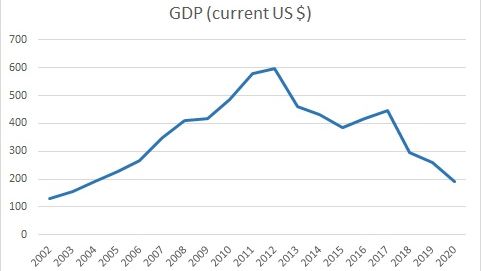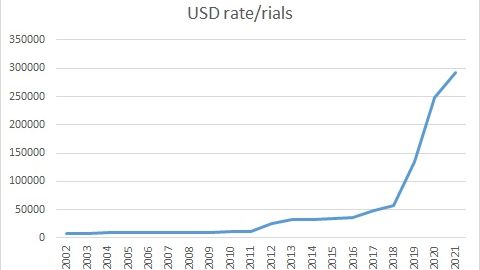How Much The Nuclear Program Has Impoverished Iran

Iran's economy has had almost no growth since its nuclear program gained momentum in 2004, to a large extent by the damage economic sanctions have inflicted.

Iran's economy has had almost no growth since its nuclear program gained momentum in 2004, to a large extent by the damage economic sanctions have inflicted.
Iranian hardliners claim they have defeated US sanctions, simply because the Islamic Republic still stands, but the cost of defiance has been the economic ruin of the country, mostly borne by citizens.
Iran’s counterproductive approach in pursuing even a civilian nuclear program is evident from the Bushehr reactor, built by Russia for generating 1,000 megawatts of electricity. It became operational a decade ago. Iran spent up to $8 billion to build the reactor, which has produced around $5 billion of electricity, leaving a profit of just $3 billion in ten years. Meanwhile, its fossil fuel power generation infrastructure was neglected and no renewable energy investments, except ill-planned dams, were made. Today, Iran suffers from serious power shortages.
But this is just a small example of the damage Iran’s nuclear ambitions have inflicted on the country.

In 2020, based on World Bank estimates, Iran’s Gross National Product (GDP) reached $191.7 billion, which was one third of what it was ten years ago. The main reason for this huge economic retrenchment was international and United States sanctions against Iran since 2011, imposed to limit its nuclear program. The international community, including Russia and China, were concerned that Iran was pursuing more than a peaceful program and cooperated with the West to impose international economic sanctions beginning in 2010 and intensifying in 2011.

Calculated based on the free market rate of the US dollar in Tehran, the size of Iran’s economy in 2020 was the same as it was in 2004. After a substantial growth around 2010 due to very high oil prices, the economy began to decline from 2012 when international sanctions left their deep mark on Iran revenues.
During the period since 2011, successive Iranian governments relied on internal borrowing financed by printing money to maintain their operations. As a result, liquidity grew tenfold exacerbating inflation and in effect devaluing the national currency. People began losing their purchasing power and gradually falling into poverty.

Since early 2018, Iran’s rial has dropped to more than 300,000 against the US dollar, while just four years ago the dollar was traded at 32,000 rials. Before the Islamic Republic, one US dollar bought 70 rials.
The government has been using the central bank as a money printing machine, instead of reforming the economy, and adopting policies to attract foreign and domestic investments. Government debt to the central bank and other state or quasi-state banks has grown tenfold in the past decade.
Based on estimates by the International Monetary Fund, government debt was 6.5 percent of Gross National Product from 2,000-2017, but in 2020 it had reached 33 percent of GDP.

The impact on ordinary people has been devastating. While the minimum income needed to live just above poverty, as the rial lost value, has grown 70-fold in the past 20 years, wages and salaries have increased only 38-fold. While blue collar workers earn around $100-120 per month, office workers make $150-180. The minimum monthly income needed for a family of 3.3 people is $400.
The real numbers speak volumes about official claims that the Islamic Republic has defeated sanctions. The country has simply become poorer.